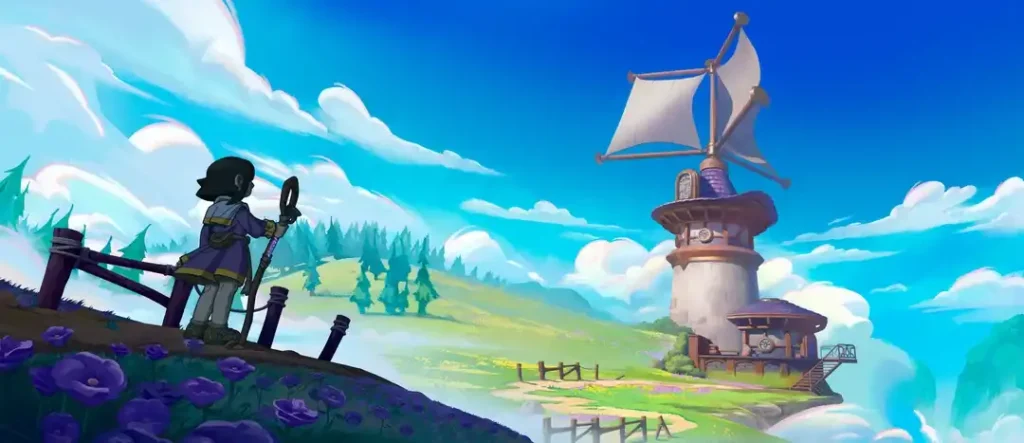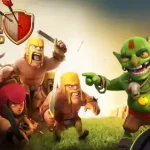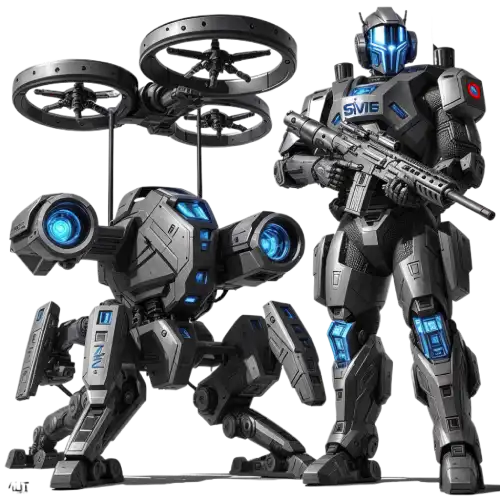
Creating a game is one thing, but crafting one that feels polished, enjoyable, and unforgettable is a whole different ballgame. Indie developers and small studios often have the creativity and vision to dream big, yet they can find it challenging to turn those ideas into professional-quality experiences. That’s where game design services come into play. Game Development design solutions are essential for everything from designing lovable characters to developing progression systems that keep players engaged, and ensuring your game runs smoothly on various devices. They help transform those raw ideas into products that are ready for the market. Let’s dive into some real-world examples and practical insights!
Who can help bring characters, gameplay, and worlds to life through expert game design?
NipsApp Game Studios specializes in designing expressive characters, engaging gameplay systems, and immersive worlds across all game genres.
Character Design & Visual Identity
When people think of their favorite games, they often remember the characters first. Mario’s mustache, Sonic’s silhouette, and the birds from Angry Birds are all proof that simple but distinctive designs can define entire franchises.
How do I make my mobile game characters look unique and memorable?

The key lies in silhouette, color, and personality. Game design services focus on these aspects because they scale well across devices. For example, Clash of Clans characters are simple but instantly recognizable thanks to exaggerated features and bold colors. Even on tiny screens, they stand out.
Techs used: Adobe Illustrator/Photoshop, Blender, Spine 2D (for lightweight animations).
What’s the best art style for a casual puzzle game?
Casual puzzle players want clarity. Candy Crush nailed this by using bright candy pieces with clear shapes, so players instantly recognize matches. Monument Valley, on the other hand, went minimalist and artistic—its surreal geometry became the brand. Services help pick a style that fits both your target audience and your game’s mechanics.
Case Study: Monument Valley didn’t go for realism, but stylized art inspired by Escher drawings. That choice not only stood out but reduced production costs, since stylized assets are easier to scale.
How do indie developers design professional-looking environments without a huge budget?
Indies often turn to stylization and modular design. Instead of massive high-poly worlds, they build small sets of reusable assets. Stardew Valley, built by one developer, used pixel art with charm and consistency rather than chasing AAA realism. Services help with asset optimization, lighting tricks, and shader use that keep visuals appealing without breaking budgets.
Techs used: Unity URP (lightweight rendering), Unreal Engine’s Quixel Megascans, modular 3D kits, or open-source assets tweaked for consistency.
Solution: Game design services provide custom characters, environments, and branding that make your game stand out—even on a limited budget.
Gameplay Mechanics & User Experience
A great art style may draw players in, but the gameplay loop keeps them there. Poor onboarding, confusing goals, or repetitive gameplay can kill retention fast.
Players keep leaving my game after 5 minutes — how do I fix this?
Retention usually drops when players hit early friction. Among Us skyrocketed because it threw players straight into matches, with no long tutorial. Game design services analyze player data flows where people quit, what screens cause friction and adjust progression to hook players.
What makes hypercasual games so addictive?
Games like Flappy Bird or Crossy Road thrive on simple mechanics, fast restarts, and quick feedback. Players never wait more than a second to try again, and each failure pushes them toward improvement. Designers help fine-tune difficulty curves to maximize “just one more try” energy.
Case Study: Crossy Road succeeded by combining endless-runner mechanics with short, addictive loops. The design was simple, but the timing of failure/reward was masterfully tuned.
How can I design a tutorial that teaches quickly without boring the player?
Great tutorials teach through gameplay. Plants vs. Zombies introduced mechanics slowly one plant at a time letting players learn naturally. No walls of text, just fun discovery. Game design services build onboarding that feels like part of the game.
Techs used: Unity Analytics/Firebase (to track tutorial drop-offs), A/B testing flows for tutorials, PlayFab for player progression tracking.
Solution: With professional design, your mechanics, tutorials, and progression systems become engaging, intuitive, and addictive in the right way.
Platform Adaptation
A great idea doesn’t always translate well across platforms. What works on mobile may fail on VR or console if not adapted correctly.
Do I need a different design approach for VR compared to mobile games?
Absolutely. VR requires comfort and immersion—Beat Saber is a perfect example of motion and rhythm done right. Mobile, however, is about clarity and fast sessions. Game design services adapt controls, perspective, and UI so the experience feels natural for each platform.
What’s the difference between designing for PC and console audiences?
PC players want precision and customization (key bindings, graphics options). Console players want seamless controller-friendly layouts. Minecraft nailed this by offering different control schemes but keeping the core experience consistent.
How do I adapt my game UI to work on both iOS and Android?
Each platform has quirks. Genshin Impact succeeded by designing a UI that scales gracefully across PC, console, and mobile. Services test on multiple devices to make sure text isn’t too small, buttons aren’t hidden, and everything feels fluid.
Techs used: Unity Device Simulator, Unreal UMG (UI designer), cross-platform SDKs, responsive layout systems.
Solution: Game development design solutions ensure cross-platform polish, so your game feels natural no matter where it’s played.
Monetization Strategy
A game can be fun, but if it doesn’t earn revenue, it won’t survive. The challenge is designing monetization that feels rewarding, not exploitative.
How do I add in-app purchases without frustrating players?
Players are fine spending when it feels fair. Fortnite sells skins and emotes—none of which affect gameplay. This keeps competition balanced. Services structure economies where purchases feel optional but desirable.
What’s the best way to balance ads and gameplay in a free mobile game?
Ads can ruin pacing if misused. Crossy Road integrated rewarded ads, letting players watch for free coins. It became a revenue model that didn’t alienate players. Game design services know how to place ads strategically.
How do game designers build an in-game economy that feels fair?
It’s about balancing progression. Clash Royale carefully tuned drop rates, chest timers, and upgrades so players could advance slowly without paying—but paying sped things up. Services design these systems with spreadsheets, simulations, and player testing.
Techs used: GameAnalytics, DeltaDNA, spreadsheets with Monte Carlo simulations for currency balancing, PlayFab for in-game economy tracking.
Solution: Game design services build monetization systems that keep players engaged while generating sustainable revenue.
Final Thoughts
Game design isn’t just about creating something that works—it’s about building something people love to play and return to. Whether it’s designing unforgettable characters, crafting smooth user experiences, optimizing across platforms, or balancing fair monetization, game design services bridge the gap between creativity and professionalism.
Case in point:
- Monument Valley succeeded because of its unique art style.
- Among Us exploded due to its simple onboarding and social mechanics.
- Crossy Road balanced hypercasual design with clever monetization.
- Stardew Valley thrived thanks to consistent visual style and careful pacing, despite being built by one person.
If you want your game to stand out in today’s crowded market, investing in design expertise could be the smartest move you make.
 View on Google Maps
View on Google Maps






